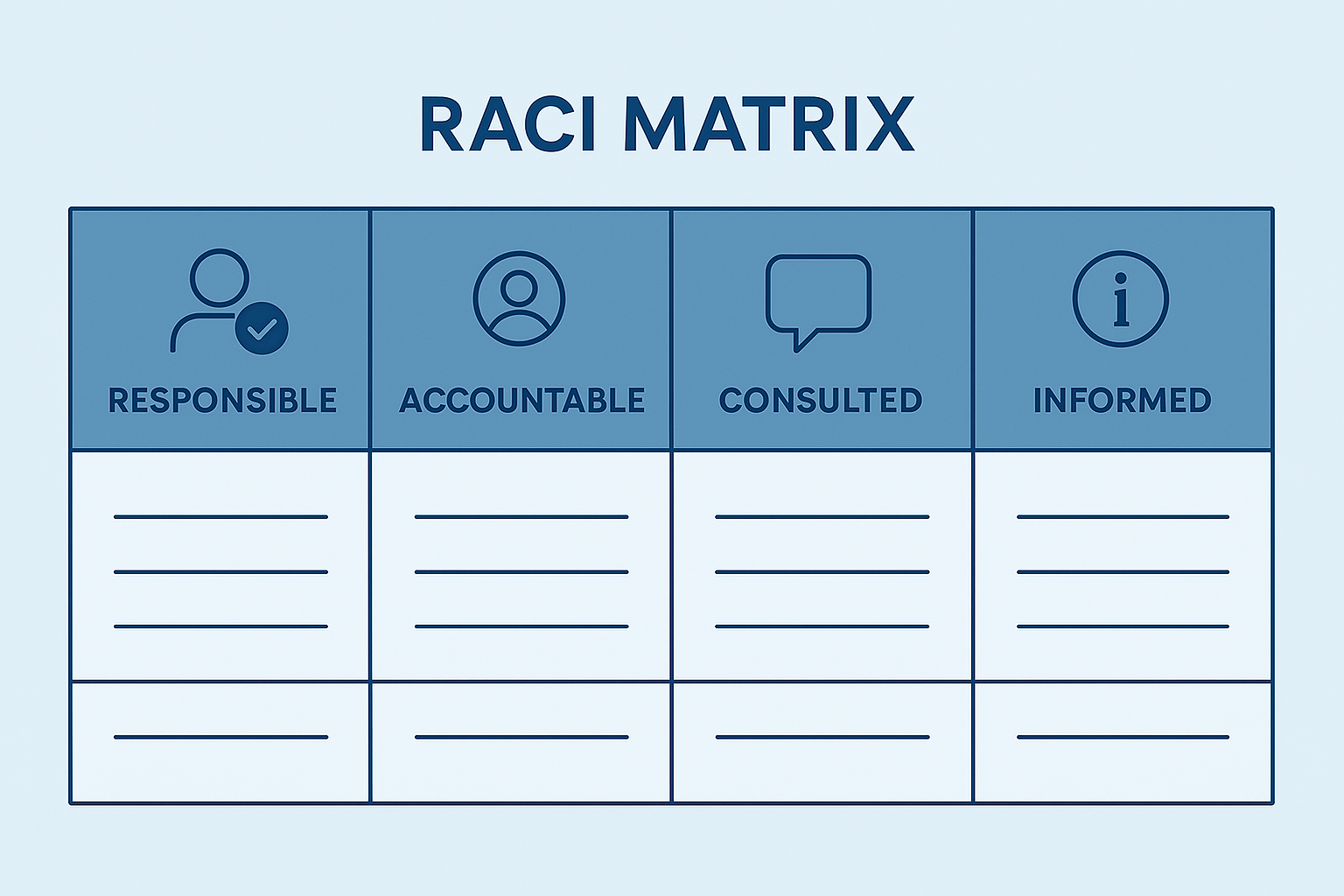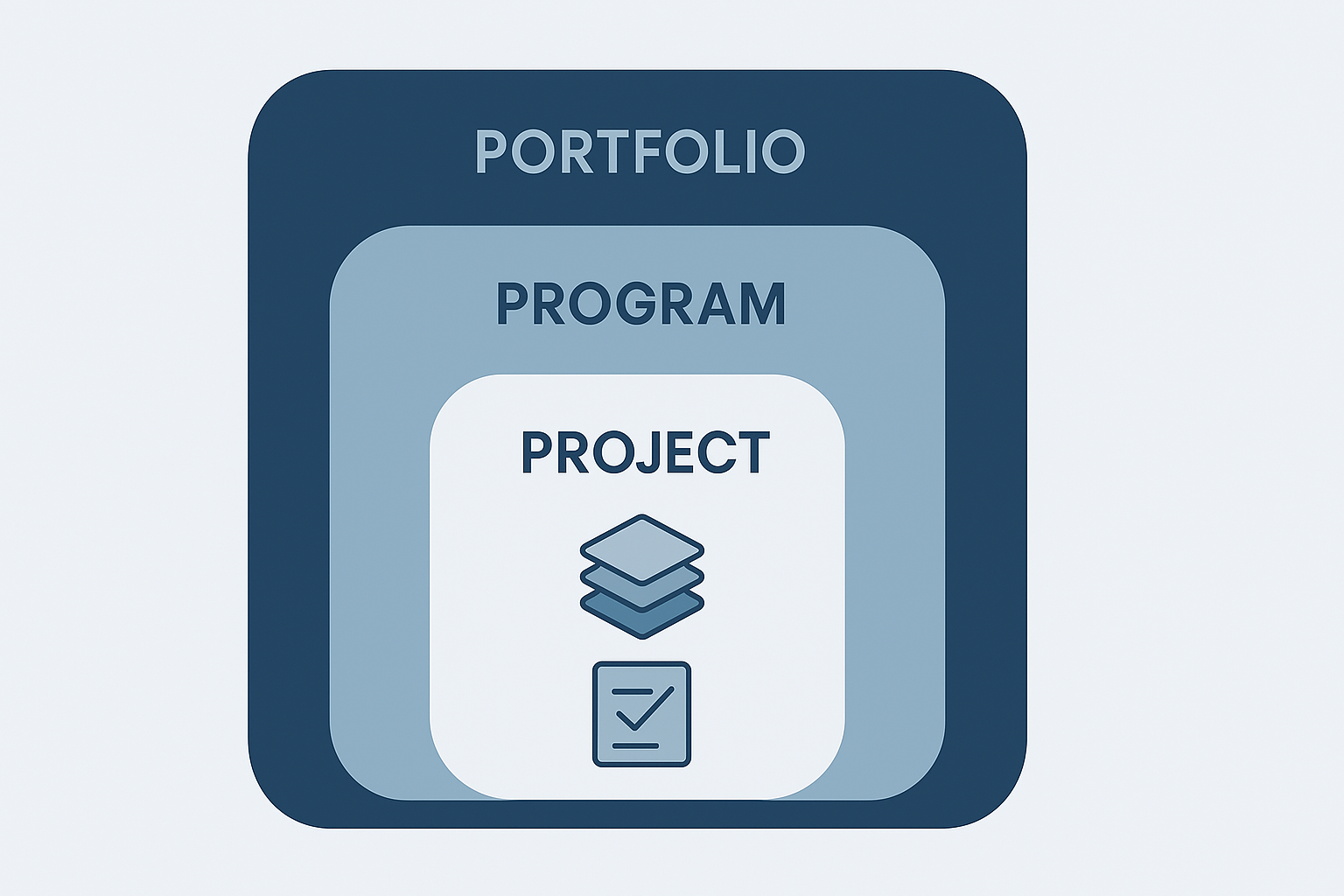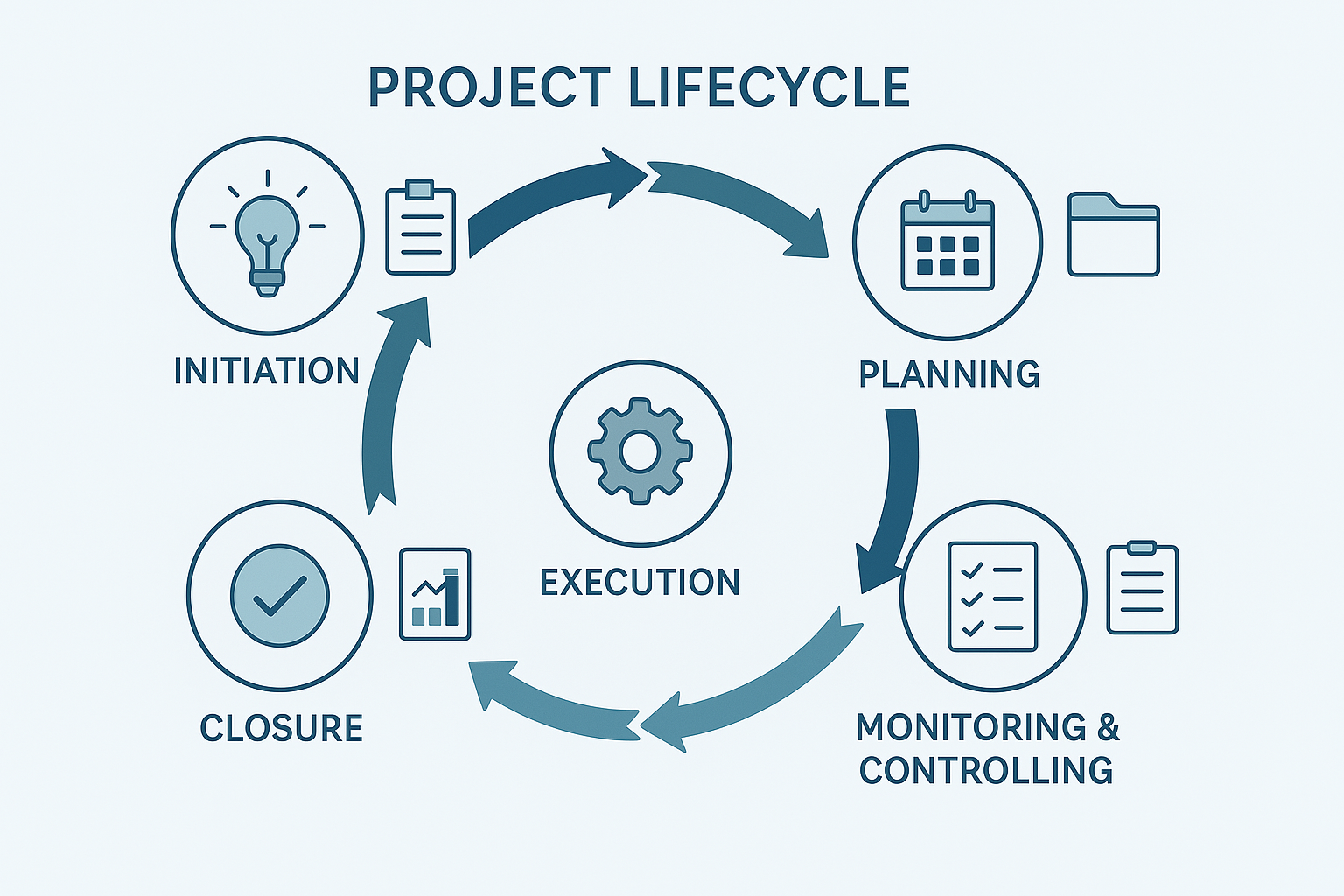Ever worked on a project where everyone assumed someone else was handling an important task—only to realize no one did?
This is exactly the kind of chaos the RACI matrix was created to prevent.
In this guide, we’ll break down what the RACI matrix is, why it matters, and how you can create one to bring clarity and accountability to your projects.
What Is a RACI Matrix?
A RACI matrix—also known as a Responsibility Assignment Matrix—is a visual tool used to clarify roles and responsibilities for tasks or deliverables within a project.
The acronym RACI stands for:
- R – Responsible: The person (or people) who do the work to complete the task.
- A – Accountable: The person ultimately answerable for the task’s completion (often signs off or makes final decisions).
- C – Consulted: People who must be consulted before a decision or action is taken; usually subject matter experts or stakeholders.
- I – Informed: People who must be kept up to date on progress, but who don’t need to be consulted directly.
Why Use a RACI Matrix?
Projects often span multiple teams, functions, and stakeholders. Without clearly defining “who does what,” you risk:
- Duplication of effort
- Missed tasks
- Delayed decisions
- Miscommunication
A RACI matrix helps:
- Avoids confusion and duplication of effort.
- Clarifies roles and expectations.
- Improves communication among teams.
- Supports faster decision-making.
- Helps align large teams, cross-functional teams, or complex projects.
When Should You Use a RACI Matrix?
A RACI matrix is especially helpful when:
- Projects involve cross-functional teams
- Roles aren’t clearly defined
- Tasks require collaboration between departments
- You’re planning large or complex projects
It can be created at the start of a project and updated as scope or team structure changes.
Best Practices for Creating a RACI Matrix:
- Identify all key tasks and deliverables.
- List roles or team members involved.
- Assign R, A, C, or I to each task for each role.
- Ensure only one A per task to avoid confusion.
- Share it with your team and stakeholders for validation.
- Keep it updated as the project evolves.
Common Mistakes to Avoid:
- Assigning multiple Accountables (A) to one task
- Overcomplicating with too many Consulted (C) or Informed (I)
- Not updating the matrix when scope or roles change
- Creating it once and never using it again
Benefits of Using a RACI Matrix:
- Everyone knows exactly what’s expected of them
- Reduces conflict and finger-pointing
- Streamlines communication and meetings
- Increases project efficiency and accountability
Example RACI Matrix:
| Task | Project Manager | Developer | QA Lead | Client |
|---|---|---|---|---|
| Define requirements | A | C | ||
| Develop feature | C | R, A | I | |
| Test feature | I | R, A | I | |
| Final approval | A | R |
Conclusion: A Simple Tool, Big Impact
The RACI matrix might seem simple, but it’s a powerful tool to:
- Define clear roles
- Align teams
- Keep your project on track
By using a RACI matrix in project management, you can lead with clarity, avoid confusion, and deliver projects more effectively.
Remember: great project managers don’t just assign tasks—they assign responsibility.



